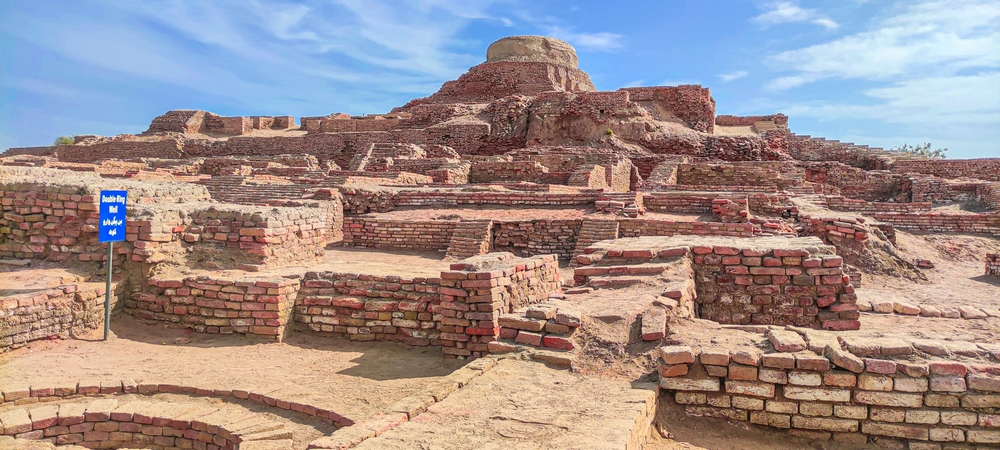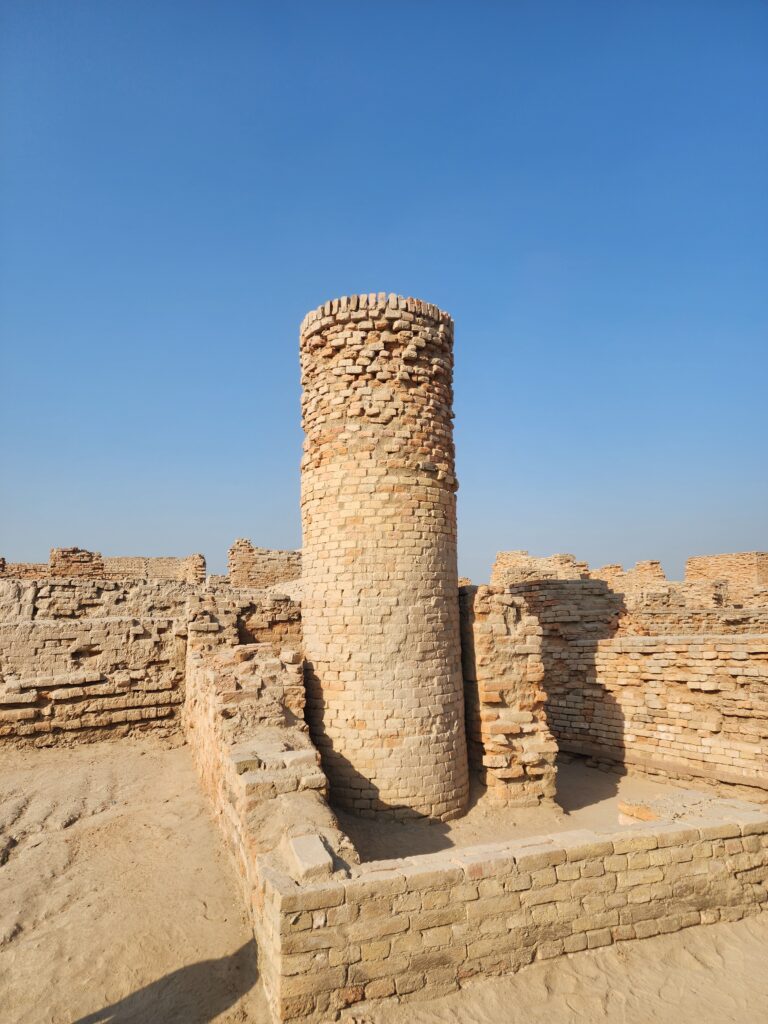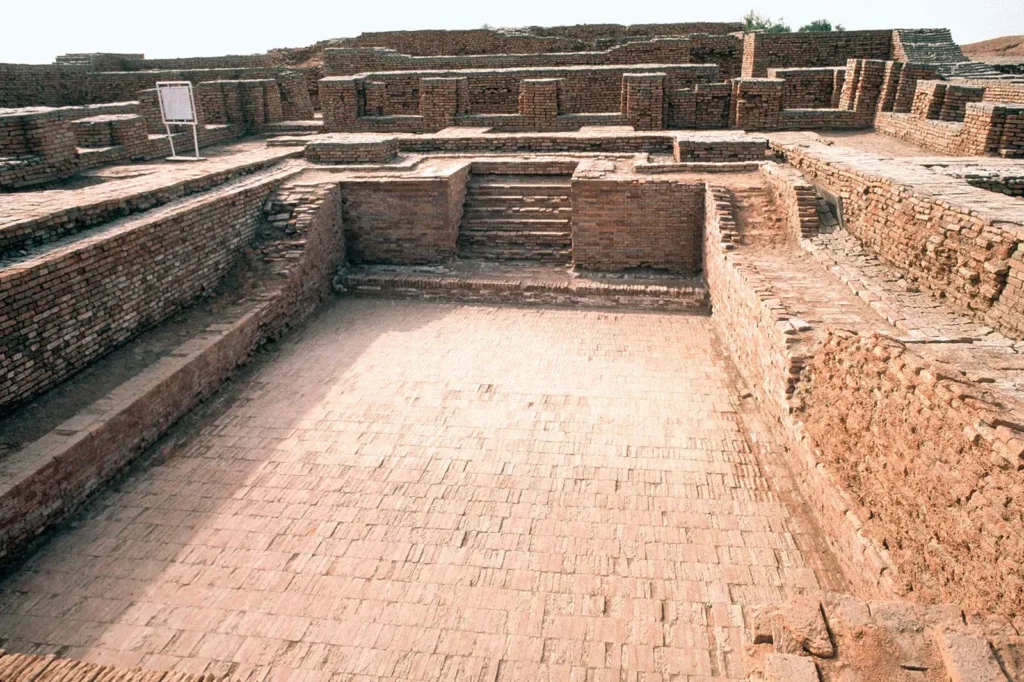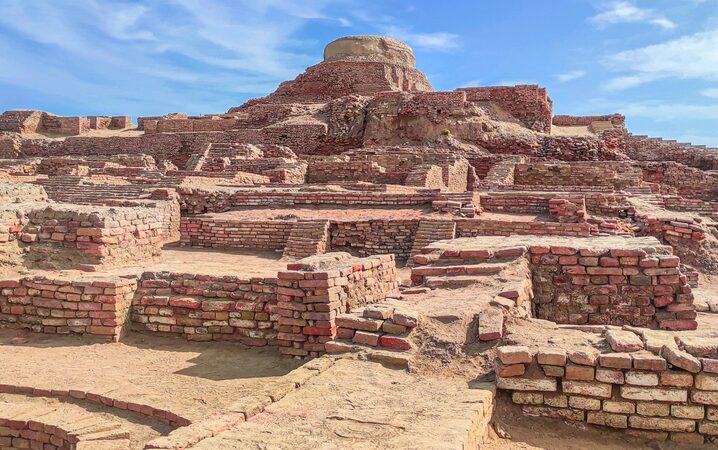Introduction: Discovering the Forgotten Marvel
Today, it stands not only as a historical site but as a powerful symbol of a forgotten civilization that once rivaled those of Mesopotamia and Ancient Egypt.
From travelers and scholars to photographers and history buffs, Mohenjo-Daro draws in thousands who seek to walk through the ruins of an ancient world that was centuries ahead of its time.
The Indus Valley Civilization: A Global Urban Pioneer
The Indus Valley Civilization (also known as the Harappan Civilization) is one of the earliest known urban cultures in the world. Along with Harappa, Ganeriwala, and other cities, Mohenjo-Daro was a major urban center in a civilization that covered what is today Pakistan and northwest India.
What makes Mohenjo-Daro extraordinary is its:
- Planned city layout using a grid system
- Advanced drainage and sanitation systems
- Standardized brick dimensions and weights
- Multi-storied residential buildings
- Centralized granaries and ceremonial baths
The famous Great Bath of Mohenjo-Daro is believed to be the world’s first public water tank, indicating complex civic and possibly religious rituals
City Design & Architecture: A Marvel of Urban Planning
Mohenjo-Daro was split into two major zones: the Citadel (possibly administrative/religious) and the Lower Town (residential/commercial).
Key architectural highlights:
- Grid-based streets intersecting at right angles
- Baked brick houses, many with wells, toilets, and underground drains
- Advanced water management, including public wells and covered drainage
- Granaries, possibly for storage of surplus grain
- Marketplace layouts, suggesting organized trade
This level of planning points to a sophisticated and centralized form of governance, rare for ancient civilizations of that time.
Mysteries and Theories: Why Did Mohenjo-Daro Fall?
Despite its brilliance, the story of Mohenjo-Daro ends in mystery. Multiple theories exist about its downfall:
- Flooding of the Indus River, leading to repeated destruction
- Climatic and environmental changes disrupting agriculture
- Gradual decline due to trade collapse or internal instability
- Foreign invasions, possibly by Indo-Aryan tribes (still debated)
Archaeologists also discovered skeletons in eerie positions, which led to speculation of sudden mass death, though most researchers now dismiss theories of violent ends.
Cultural & Historical Significance Today
Mohenjo-Daro is a UNESCO World Heritage Site (designated in 1980) and one of the top historical sites in Pakistan. It remains a symbol of the region’s ancient glory and a focal point for academic research in South Asian archaeology.
Artifacts like pottery, tools, figurines, seals, and ornaments provide glimpses into the cultural, economic, and religious practices of its people. However, the Indus script remains undeciphered, adding to the mystery and allure of the site.
Tourism Guide: How to Visit Mohenjo-Daro
- 📍 Location: Near Larkana, Sindh province, Pakistan
- ✈️ Access:
- By air: Mohenjo-Daro Airport (limited domestic flights, usually chartered flights only)
- By road: From Sukkur or Larkana via highway or 7 hr drive from Karachi.
- 🕰️ Visiting Hours: Usually from sunrise to sunset
- 🏛️ Mohenjo-Daro Museum: Houses tools, pottery, and statues including the famous “Priest-King” sculpture and bronze “Dancing Girl.”
Best Time to Visit:
- November to February – Cooler and more comfortable weather for outdoor exploration
- Avoid extreme summer heat (temperatures can exceed 45°C)
Mohenjo-Daro is not just an archaeological site—it is a living textbook of human civilization. It teaches us that innovation, civic planning, and culture thrived even 4,000 years ago in what is now Pakistan.
For those who seek to explore ancient civilizations, appreciate historical travel in Pakistan, or understand South Asia’s roots, Mohenjo-Daro is a journey worth taking. Visit it not just with your eyes, but with curiosity, wonder, and reverence.



Mohenjo-Daro Tour Packages
Starting in Karachi, this 11-day road trip covers historical and cultural sites along the Indus Valley route. You visit Hyderabad, Sukkur, Manchar Lake, Mohenjo-Daro, Bahawalpur, Multan, Lahore, Rohtas Fort, and end the tour in Islamabad, with a visit to Taxila.

